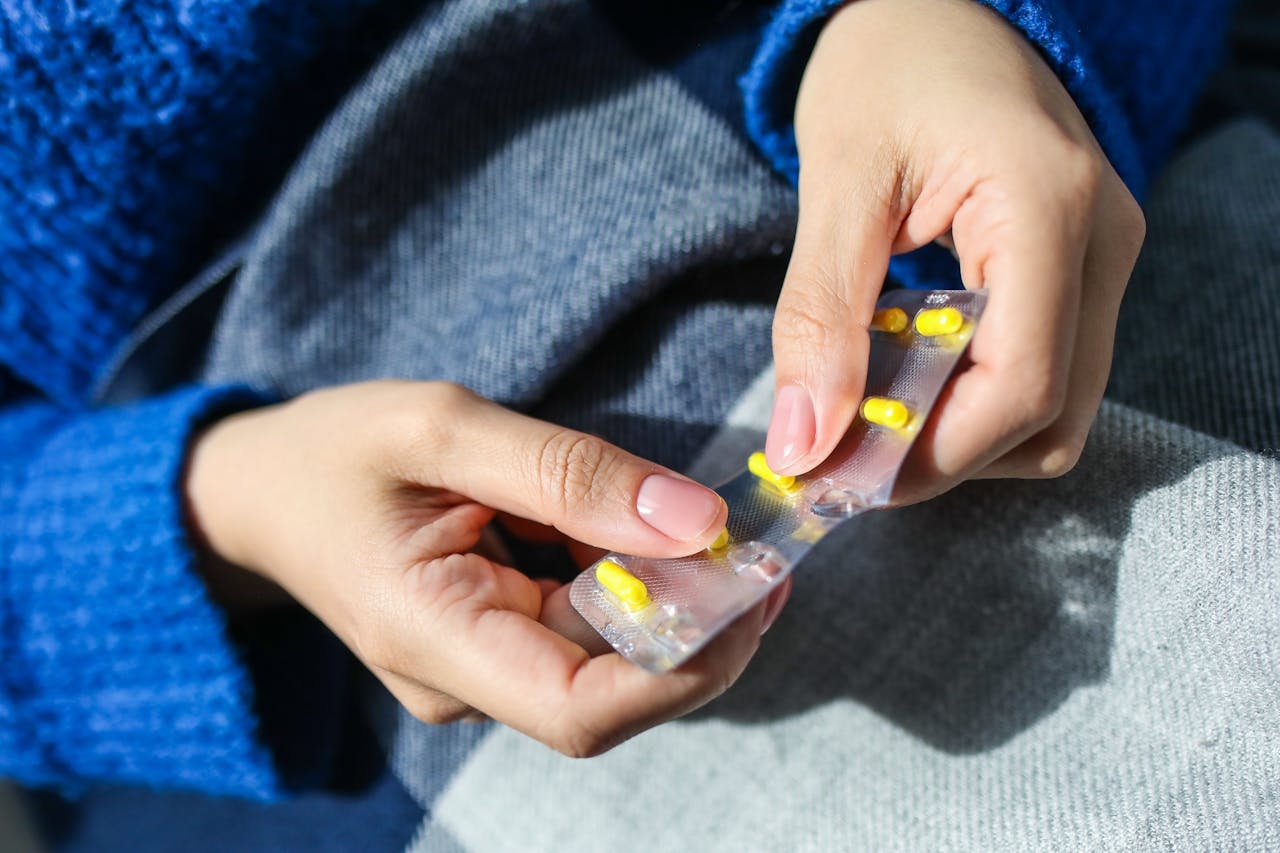

Pradaxa 40 mg granulado recubierto


Інструкція із застосування Pradaxa 40 mg granulado recubierto
Введение
Противопоказания: информация для пациента
Прадакса 20мг гранулированного покрытия
Прадакса 30мг гранулированного покрытия
Прадакса 40мг гранулированного покрытия
Прадакса 50мг гранулированного покрытия
Прадакса 110мг гранулированного покрытия
Прадакса 150мг гранулированного покрытия
дабигатран этексилат
Читайте весь этот лист информации тщательно, прежде чем ваш ребенок начнет принимать этот препарат, потому что в нем есть важная информация для вас.
- Храните этот лист информации, поскольку может потребоваться повторное его прочтение.
- Если у вас есть какие-либо вопросы, обратитесь к врачу вашего ребенка или фармацевту.
- Этот препарат был назначен только вашему ребенку, и он не должен давать его другим людям, даже если у них есть одинаковые симптомы, как у вашего ребенка, поскольку это может навредить им.
- Если ваш ребенок испытывает побочные эффекты, обратитесь к врачу вашего ребенка или фармацевту, даже если это побочные эффекты, которые не указаны в этом листе информации. См. раздел4.
1. Что такое Прадакса и для чего он используется
2. Что нужно знать перед тем, как ваш ребенок начнет принимать Прадакса
3. Как принимать Прадакса
4. Возможные побочные эффекты
5. Хранение Прадакса
6. Содержимое упаковки и дополнительная информация
1. Что такое Прадакса и для чего она используется
Прадакса содержит активное вещество дабигатран этексилат и относится к группе препаратов, называемых противocoagulантами. Он работает, блокируя вещество в организме, участвующее в образовании кровяных сгустков.
Прадакса используется у детей для лечения кровяных сгустков и предотвращения образования новых кровяных сгустков.
2. Что нужно знать перед тем, как начать принимать своего ребенка на Прадаксу
Не использовать Прадакса
‑если ваш ребенок аллергиен на дабигатран этексилат или на какой-либо из других компонентов этого препарата (включая те, которые перечислены в разделе6).
‑если функция почек вашего ребенка очень снижена.
‑если ваш ребенок сейчас страдает от кровотечений.
‑если ваш ребенок имеет какую-либо болезнь в органе тела, которая увеличивает риск серьезных кровотечений (например, язва желудка, травма или кровотечение в мозге, недавняя хирургическая операция мозга или глаз).
‑если ваш ребенок склонен к кровотечениям. Этот склонность может быть врожденной, неизвестной причины или вызванной другими препаратами.
‑если ваш ребенок принимает препараты для предотвращения образования тромбов в крови (например, варфарин, ривароксабан, апиксабан или гепарин), за исключением случаев смены антикоагулянта или при использовании катетера венозного или артериального типа и одновременного введения гепарина через этот катетер для поддержания его открытия.
‑если функция печени вашего ребенка серьезно снижена или ваш ребенок страдает от какой-либо болезни печени, которая может быть смертельной.
‑если ваш ребенок принимает кетоконазол или итараконазол перорально, препараты, используемые для лечения грибковых инфекций.
‑если ваш ребенок принимает циклоспорин перорально, препарат, используемый для предотвращения отторжения органов после пересадки.
‑если ваш ребенок принимает дронедарон, препарат, используемый для лечения аритмии сердца.
‑если ваш ребенок принимает препарат ассоциации глекапревира и пибрентасвир, противовирусный препарат, используемый для лечения гепатитаC.
‑если у вашего ребенка имплантирована искусственная клапанное протеза, требующая постоянного антикоагулянта.
Предупреждения и предостережения
Советуйтесь с врачом вашего ребенка перед началом использования Прадакса у вашего ребенка. Во время лечения этим препаратом также может потребоваться консультация врача вашего ребенка, если ваш ребенок испытывает какие-либо симптомы или если ваш ребенок должен пройти хирургическую операцию.
Сообщите врачу вашего ребенкаесли ваш ребенок страдает или страдал от какого-либо расстройства или болезни, особенно из перечисленных ниже:
‑Если ваш ребенок имеет повышенный риск кровотечения, например:
- если ваш ребенок недавно страдал кровотечениями.
- если ваш ребенок недавно прошел биопсию (вырезание ткани) в прошлом месяце.
- если ваш ребенок получил серьезную травму (например, перелом кости, травма головы или любая травма, требующая хирургического вмешательства).
- если ваш ребенок страдает от воспаления желудка или желудка.
- если ваш ребенок имеет проблемы с рефлюксом желудочного сока в пищевод.
- если ваш ребенок принимает препараты, которые могут увеличить риск кровотечения. См. «Препараты и Прадакса» ниже.
- если ваш ребенок принимает противовоспалительные препараты, такие как, например, диклофенак, ибупрофен или пироксикам.
- если ваш ребенок страдает от бактериальной эндокардита (инфекции сердца).
- если вы знаете, что функция почек вашего ребенка снижена или если ваш ребенок страдает от дегидратации (симптомы включают чувство жажды и выделение небольших количеств темной (концентрированной) мочи с пеной).
- если ваш ребенок страдает от инфекции мозга или вокруг него.
‑Если ваш ребенок страдал от инфаркта или если у вашего ребенка диагностирована болезнь, которая увеличивает риск инфаркта.
‑Если ваш ребенок страдает от болезни печени, связанной с изменениями в анализах крови. Использование этого препарата не рекомендуется в этом случае.
Будьте особенно осторожны с Прадаксой
‑Если ваш ребенок должен пройти хирургическую операцию:
В этом случае Прадакса должна быть временно прекращена из-за повышенного риска кровотечения во время и после хирургической операции. Очень важно, чтобы вы давали Прадакса вашему ребенку перед и после хирургической операции точно в те моменты, которые указал врач вашего ребенка.
‑Если хирургическая операция требует установки катетера или инъекции в спинном мозге вашего ребенка (например, для эпидуральной или спинальной анестезии или для лечения боли):
- Очень важно, чтобы вы давали Прадакса вашему ребенку перед и после хирургической операции точно в те моменты, которые указал врач вашего ребенка.
- Сообщите врачу вашего ребенка немедленно, если ваш ребенок испытывает онемение или слабость в ногах или проблемы с кишечником или мочевым пузырем после окончания анестезии, поскольку это требует срочной медицинской помощи.
‑Если ваш ребенок упадет или получит травму во время лечения, особенно если он ударится головой. Обратитесь за медицинской помощью срочно. Возможно, вашему ребенку потребуется медицинское осмотр, поскольку он может иметь повышенный риск кровотечения.
‑Если вы знаете, что ваш ребенок страдает от болезни, называемой синдромом антифосфолипидов (заболеванием иммунной системы, которое увеличивает риск образования тромбов), сообщите врачу вашего ребенка, чтобы он решил, нужно ли изменить лечение.
Препараты и Прадакса
Сообщите врачу вашего ребенка или аптекарю, если ваш ребенок принимает или принимал в последнее время любой другой препарат.В частности, вы должны сообщить врачу вашего ребенка перед тем, как давать Прадаксаесли ваш ребенок принимает любой из следующих препаратов:
‑Препараты для снижения свертываемости крови (например, варфарин, фенпрокумон, аценокумарол, гепарин, клопидогрел, прасугрел, тикагрелор, ривароксабан, ацетилсалициловая кислота).
‑Препараты для лечения грибковых инфекций (например, кетоконазол, итараконазол), за исключением случаев применения на коже.
‑Препараты для лечения аритмии сердца (например, амиодарон, дронедарон, квинидин, верапамил).
‑Препараты для предотвращения отторжения органов после пересадки (например, такролимус, циклоспорин).
‑Препарат ассоциации глекапревира и пибрентасвир (противовирусный препарат, используемый для лечения гепатитаC).
‑Противовоспалительные препараты и препараты для купирования боли (например, ацетилсалициловая кислота, ибупрофен, диклофенак).
‑Зверобойник, растение для лечения депрессии.
‑Противодепрессивные препараты, называемые ингибиторами селективного захвата серотонина или ингибиторами селективного захвата серотонина и норадреналина.
‑Рифампицин или кларитромицин (два антибиотика).
‑Противовирусные препараты для ВИЧ-инфекции (например, ритонавир).
‑Некоторые препараты для лечения эпилепсии (например, карбамазепин, фенитоин).
Принимайте Прадаксу с пищей и напитками
Не смешивайте Прадакса в порошке с молоком или с мягкими продуктами, содержащими молочные продукты. Используйте этот препарат только с яблочным соком или с одним из мягких продуктов, указанных в инструкциях по применению в конце брошюры.
Беременность и грудное вскармливание
Этот препарат предназначен для использования у детей в возрасте до 12 лет. Информация о беременности и грудном вскармливании может не быть актуальной в контексте лечения вашего ребенка.
Неизвестны эффекты Прадакса на беременность и плод. Беременная женщина не должна принимать этот препарат, если врач не посоветует иначе. Женщина в возрасте фертильности должна избегать беременности во время лечения Прадаксой.
Период грудного вскармливания должен быть прерван во время лечения Прадаксой.
Вождение и использование машин
Прадакса не имеет известных эффектов на способность вождения и использования машин.
3. Как принимать Прадаксу
Прадакса в виде гранул можно использовать у детей младше 12 лет, если они способны проглатывать мягкую пищу. Прадакса в виде капсул доступна для лечения детей в возрасте 8 лет и старше.
Следуйте точно указаниям по применению этого препарата, которые были указаны врачом вашего ребенка. Если у вас есть какие-либо сомнения, обратитесь к врачу вашего ребенка.
Прадакса следует принимать дважды в день, одну дозу утром и одну дозу вечером, примерно в одно и то же время каждый день. Интервал между приемами должен быть как можно ближе к 12 часам.
Рекомендуемая доза зависит от веса и возраста. Врач вашего ребенка определит правильную дозу для вашего ребенка. Врач вашего ребенка может скорректировать дозу во время лечения. Ваш ребенок должен продолжать принимать все другие лекарства, кроме тех, которые врач вашего ребенка велит ему прекратить.
В таблице 1 показаны единичные дозы и общая суточная доза Прадакса в миллиграммах (мг) для пациентов младше 12 месяцев. Дозы зависят от веса в килограммах (кг) и возраста в месяцах пациента.
Таблица 1:Таблица дозирования для Прадакса в виде гранул для пациентов младше 12 месяцев
Сочетания веса/возраста | Единичная доза в мг | Общая суточная доза в мг | |
Вес в кг | Возраст в МЕСЯЦАХ | ||
2,5 до менее 3 кг | 4 до менее 5 месяцев | 20 | 40 |
3 до менее 4 кг | 3 до менее 6 месяцев | 20 | 40 |
4 до менее 5 кг | 1 до менее 3 месяцев | 20 | 40 |
3 до менее 8 месяцев | 30 | 60 | |
8 до менее 10 месяцев | 40 | 80 | |
5 до менее 7 кг | 0 до менее 1 месяца | 20 | 40 |
1 до менее 5 месяцев | 30 | 60 | |
5 до менее 8 месяцев | 40 | 80 | |
8 до менее 12 месяцев | 50 | 100 | |
7 до менее 9 кг | 3 до менее 4 месяцев | 40 | 80 |
4 до менее 9 месяцев | 50 | 100 | |
9 до менее 12 месяцев | 60 | 120 | |
9 до менее 11 кг | 5 до менее 6 месяцев | 50 | 100 |
6 до менее 11 месяцев | 60 | 120 | |
11 до менее 12 месяцев | 70 | 140 | |
11 до менее 13 кг | 8 до менее 10 месяцев | 70 | 140 |
10 до менее 12 месяцев | 80 | 160 | |
13 до менее 16 кг | 10 до менее 11 месяцев | 80 | 160 |
11 до менее 12 месяцев | 100 | 200 |
Ниже приведены сочетания пакетиков, которые можно использовать для получения рекомендованных единичных доз в таблице дозирования. Возможны и другие сочетания.
20 мг: один пакетик 20 мг60 мг: два пакетика по 30 мг
30 мг: один пакетик 30 мг70 мг: один пакетик 30 мг плюс один пакетик 40 мг
40 мг: один пакетик 40 мг80 мг: два пакетика по 40 мг
50 мг: один пакетик 50 мг100 мг: два пакетика по 50 мг
Таблица 2:Таблица дозирования для Прадакса в виде гранул для пациентов от 1 года до 12 лет
Сочетания веса/возраста | Единичная доза в мг | Общая суточная доза в мг | |
Вес в кг | Возраст в ГОДЫ | ||
5 до менее 7 кг | 1 до менее 2 лет | 50 | 100 |
7 до менее 9 кг | 1 до менее 2 лет | 60 | 120 |
2 до менее 4 лет | 70 | 140 | |
9 до менее 11 кг | 1 до менее 1,5 лет | 70 | 140 |
1,5 до менее 7 лет | 80 | 160 | |
11 до менее 13 кг | 1 до менее 1,5 лет | 80 | 160 |
1,5 до менее 2,5 лет | 100 | 200 | |
2,5 до менее 9 лет | 110 | 220 | |
13 до менее 16 кг | 1 до менее 1,5 лет | 100 | 200 |
1,5 до менее 2 лет | 110 | 220 | |
2 до менее 12 лет | 140 | 280 | |
16 до менее 21 кг | 1 до менее 2 лет | 110 | 220 |
2 до менее 12 лет | 140 | 280 | |
21 до менее 26 кг | 1,5 до менее 2 лет | 140 | 280 |
2 до менее 12 лет | 180 | 360 | |
26 до менее 31 кг | 2,5 до менее 12 лет | 180 | 360 |
31 до менее 41 кг | 2,5 до менее 12 лет | 220 | 440 |
41 до менее 51 кг | 4 до менее 12 лет | 260 | 520 |
51 до менее 61 кг | 5 до менее 12 лет | 300 | 600 |
61 до менее 71 кг | 6 до менее 12 лет | 300 | 600 |
71 до менее 81 кг | 7 до менее 12 лет | 300 | 600 |
Более 81 кг | 10 до менее 12 лет | 300 | 600 |
Ниже приведены сочетания пакетиков, которые можно использовать для получения рекомендованных единичных доз в таблице дозирования. Возможны и другие сочетания.
50 мг: один пакетик 50 мг140 мг: один пакетик 30 мг плюс один пакетик 110 мг
60 мг: два пакетика по 30 мг180 мг: один пакетик 30 мг плюс один пакетик 150 мг
70 мг: один пакетик 30 мг плюс один пакетик 40 мг220 мг: два пакетика по 110 мг
80 мг: два пакетика по 40 мг260 мг: один пакетик 110 мг плюс один пакетик 150 мг
100 мг: два пакетика по 50 мг300 мг: два пакетика по 150 мг
110 мг: один пакетик 110 мг
Форма и метод введения
Этот препарат следует принимать вместе с яблочным соком или с одним из мягких продуктов, указанных в инструкциях по применению. Не смешивайте этот препарат с молоком или с мягкими продуктами, содержащими молочные продукты.
Инструкции по применению
Нажмите на ссылку ниже, чтобы просмотреть подробные инструкции по применению.
Смена противокоагулянтной терапии
Не изменяйте противокоагулянтную терапию вашего ребенка без конкретных указаний врача вашего ребенка.
Если вы давали ребенку слишком много Прадакса
Принимая слишком много этого препарата, вы увеличиваете риск кровотечения. Сразу же обратитесь к врачу вашего ребенка, если вы давали ребенку слишком много этого препарата. Есть специальные варианты лечения.
Если вы забыли дать Прадакса своему ребенку
Если вы забыли дать ребенку одну дозу, вы можете дать ему эту дозу в течение 6 часов до следующей дозы.
Не давайте ребенку двойную дозу, чтобы компенсировать пропущенную дозу.
Если ребенок принял только часть дозы, не пытайтесь дать ему вторую дозу в этот момент. Дайте ему следующую дозу в назначенное время примерно через 12 часов.
Если вы прекращаете лечение Прадакса
Принимайте Прадакса точно так, как было назначено. Не прекращайте лечение без консультации с врачом вашего ребенка, поскольку риск развития тромба может быть выше, если вы прекратите лечение слишком рано. Если у ребенка после приема Прадакса появляется изжога, обратитесь к врачу вашего ребенка.
Если у вас есть какие-либо другие вопросы по поводу использования этого препарата, обратитесь к врачу вашего ребенка или фармацевту.
4. Возможные побочные эффекты
Как и все лекарства, этот препарат может вызывать побочные эффекты, хотя не все люди их испытывают.
Прадакса действует на свертываемость крови; поэтому большинство побочных эффектов связаны с признаками, такими как кровотечения или кровоизлияния. Могут возникнуть эпизоды более серьезного или тяжелого кровотечения, которые являются самыми серьезными побочными эффектами и, независимо от их местоположения, могут привести к инвалидности, потенциально быть смертельными или даже привести к смерти. В некоторых случаях эти кровотечения могут быть не очевидными.
Если ваш ребенок испытывает любой эпизод кровотечения, который не останавливается сам по себе, или если ваш ребенок испытывает признаки чрезмерного кровотечения (особенная слабость, усталость, бледность, головокружение, головная боль или непонятная отечность), немедленно обратитесь к врачу вашего ребенка. Врач вашего ребенка может решить оставить вашего ребенка на близком наблюдении или заменить препарат.
Немедленно сообщите врачу вашего ребенка, если ваш ребенок испытывает тяжелую аллергическую реакцию, которая вызывает затруднение дыхания или головокружение.
Возможные побочные эффекты подробно описаны ниже, группируются по частоте их проявления.
Частые (могут повлиять на до 1 из 10людей):
- Понижение количества красных кровяных телец в крови
- Понижение количества тромбоцитов в крови
- Сыпь кожи с темными, возвышенными и зудящими бляшками, вызванными аллергией
- Сudden изменение кожи, влияющее на цвет и внешний вид
- Формирование гематом
- Носовое кровотечение
- Рефлюкс желудочного сока в пищевод
- Отрыжка
- Чувство рвоты
- Частые жидкие или водянистые испражнения
- Непереваривание пищи
- Падение волос
- Повышение уровня ферментов печени
Немного частые (могут повлиять на до 1 из 100людей):
- Понижение количества лейкоцитов (которые помогают бороться с инфекциями)
- Кровотечение может быть в желудке или кишечнике, в мозге, в прямой кишке, в пенисе/вагине или в мочевом пузыре (включая кровь в моче, которая окрашивает мочу в розовый или красный цвет), или под кожей
- Понижение количества гемоглобина в крови (вещества, содержащегося в красных кровяных телецах крови)
- Понижение соотношения кровяных телец
- Зуд
- Тошнота с кровью или мокрота с кровяными пятнами
- Боль в животе или боль в животе
- Искривление пищевода и желудка
- Аллергическая реакция
- Трудность глотания
- Желтуха кожи или белых глаз, вызванная печеночными или кровяными проблемами
Неизвестная частота (частота не может быть оценена на основе доступных данных):
- Недостаток лейкоцитов (которые помогают бороться с инфекциями)
- Грубая аллергическая реакция, вызывающая затруднение дыхания или головокружение
- Грубая аллергическая реакция, вызывающая отек лица или гортани
- Затруднение дыхания или хриплость
- Кровотечение
- Кровотечение может быть в суставе или в ране, в хирургической разрезе, в месте введения инъекции или в месте введения катетера в вену
- Кровотечение может быть геморроидального происхождения
- Улcers в желудке или кишечнике (включая язву в пищеводе)
- Аномалии в тестах функции печени
Сообщение о побочных эффектах
Если ваш ребенок испытывает любой тип побочного эффекта, обратитесь к врачу или фармацевту, даже если это побочные эффекты, которые не указаны в этом листе информации. Вы также можете сообщить их напрямую черезнациональную систему уведомления, включенную вПриложениеV. Сообщение о побочных эффектах может помочь предоставить более подробную информацию о безопасности этого препарата.
5. Консервация Прадакса
Храните этот препарат вне видимости и доступа детей.
Не используйте этот препарат после даты окончания срока годности, указанной на коробке после «CAD». Дата окончания срока годности — последний день месяца, указанного.
Перед первым использованием не открывайте упаковку алюминиевой фольги, содержащую пакеты с Прадаксой в порошке, покрытого для защиты от влажности.
После открытия упаковки алюминиевой фольги, содержащей пакеты с покрытым порошком и дезикантом, препарат должен использоваться в течение 6месяцев. Открытый пакет нельзя хранить и должен использоваться сразу после открытия.
Лекарства не следует выбрасывать через канализацию. Обратитесь к вашему аптекарю, чтобы узнать, как правильно утилизировать упаковки и лекарства, которые больше не нужны. Таким образом, вы поможете защитить окружающую среду.
6. Содержание упаковки и дополнительная информация
Состав Прадакса
‑Активное вещество — дабигатран. Каждый пакет Прадакса 20мг гранулированного покрытия содержит гранулированное покрытие с 20мг дабигатрана этилата (в форме месилата).
‑Активное вещество — дабигатран. Каждый пакет Прадакса 30мг гранулированного покрытия содержит гранулированное покрытие с 30мг дабигатрана этилата (в форме месилата).
‑Активное вещество — дабигатран. Каждый пакет Прадакса 40мг гранулированного покрытия содержит гранулированное покрытие с 40мг дабигатрана этилата (в форме месилата).
‑Активное вещество — дабигатран. Каждый пакет Прадакса 50мг гранулированного покрытия содержит гранулированное покрытие с 50мг дабигатрана этилата (в форме месилата).
‑Активное вещество — дабигатран. Каждый пакет Прадакса 110мг гранулированного покрытия содержит гранулированное покрытие с 110мг дабигатрана этилата (в форме месилата).
‑Активное вещество — дабигатран. Каждый пакет Прадакса 150мг гранулированного покрытия содержит гранулированное покрытие с 150мг дабигатрана этилата (в форме месилата).
‑Остальные компоненты — ацетат щавелевой кислоты, арабика, гипромелоза, диметикон 350, тальк и гидроксипропилцеллюлоза.
Внешний вид препарата и содержание упаковки
Пакеты Прадакса гранулированного покрытия содержат гранулированное покрытие желтого цвета.
Каждая упаковка этого препарата содержит алюминиевую бумагу, которая, в свою очередь, содержит 60серебристых алюминиевых пакетов с Прадаксом гранулированного покрытия и десикантом (с надписью “DO NOT EAT” [не съедать] включая пиктограмму и надпись “SILICA GEL” [гель силика]).
Заявитель о регистрации
Boehringer Ingelheim International GmbH
Binger Strasse 173
55216 Ingelheim am Rhein
Германия
Ответственный за производство
Boehringer Ingelheim Pharma GmbH & Co. KG
Binger Strasse 173
55216 Ingelheim am Rhein
Германия
Для получения дополнительной информации о этом препарате обратитесь к местному представителю заявителя о регистрации:
Бельгия/Бельгия/Бельгия Boehringer Ingelheim SComm | Литва Boehringer Ingelheim RCV GmbH & Co KG Литовский филиал Тел: +370 5 2595942 |
???????? ????????? ????????? ??? ???? ? ??. ?? – ???? ???????? ???.: +359 2 958 79 98 | Люксембург/Луксембург Boehringer Ingelheim SComm |
Чешская республика Boehringer Ingelheim spol. s r.o. Тел: +420 234 655 111 | Венгрия Boehringer Ingelheim RCV GmbH & Co KG Венгерский филиал Тел: +36 1 299 8900 |
Дания Boehringer Ingelheim Дания A/S Тел: +45 39 15 88 88 | Мальта Boehringer Ingelheim Ирландия Ltd. Тел: +353 1 295 9620 |
Германия Boehringer Ingelheim Фарма GmbH & Co.KG Тел: +49 (0) 800 77 90 900 | Нидерланды Boehringer IngelheimB.V. Тел: +31 (0) 800 22 55 889 |
Эстония Boehringer Ingelheim RCV GmbH & Co KG Эстонский филиал Тел: +372 612 8000 | Норвегия Boehringer Ingelheim Норвегия KS Тел: +47 66 76 13 00 |
Греция Boehringer IngelheimГрецияМонопрофессиональнаяА.Е. Тел: +30 2 10 89 06 300 | Австрия Boehringer Ingelheim RCV GmbH & Co KG Тел: +43 1 80 105‑7870 |
Испания Boehringer Ingelheim Испания S.A. Тел: +34 93 404 51 00 | Польша Boehringer Ingelheim Sp.zo.o. Тел: +48 22 699 0 699 |
Франция Boehringer Ingelheim Франция S.A.S. Тел: +33 3 26 50 45 33 | Португалия Boehringer Ingelheim Португалия, Lda. Тел: +351 21 313 53 00 |
Хорватия Boehringer Ingelheim Загреб д.о.о. Тел: +385 1 2444 600 | Румыния Boehringer Ingelheim RCV GmbH & Co KG Вена‑Сукурсала Бухарест Тел: +40 21 302 2800 |
Ирландия Boehringer Ingelheim Ирландия Ltd. Тел: +353 1 295 9620 | Словения Boehringer Ingelheim RCV GmbH & Co KG Подружница Любляна Тел: +386 1 586 40 00 |
Исландия Vistor hf. Сим: +354 535 7000 | Словацкая республика Boehringer Ingelheim RCV GmbH & Co KG организационная часть Тел: +421 2 5810 1211 |
Италия Boehringer Ingelheim Италия S.p.A. Тел: +39 02 5355 1 | Финляндия Boehringer Ingelheim Финляндия Ky Пух/Тел: +358 10 3102 800 |
Кипр Boehringer IngelheimГреция Монопрофессиональная А.Е. Тел: +30 2 10 89 06 300 | Швеция Boehringer Ingelheim AB Тел: +46 8 721 21 00 |
Латвия Boehringer Ingelheim RCV GmbH & Co KG Латвийский филиал Тел: +371 67 240 011 | Соединенное Королевство (Северная Ирландия) Boehringer Ingelheim Ирландия Ltd. Тел: +353 1 295 9620 |
Дата последнего утверждения этого бюллетеня
Подробная информация о этом препарате доступна на веб-сайте Европейского агентства по лекарственным средствам:http://www.ema.europa.eu
Инструкции по применению
Не давайте Прадакса гранулированного покрытия
- через шприцы или трубки для питания
- с другими продуктами питания или напитками, кроме сока яблока и мягких продуктов питания, как указано ниже
Давайте Прадакса гранулированного покрытия с мягкими продуктами питания или с соком яблока. Инструкции приведены ниже в разделах А) для мягких продуктов питания и Б) для сока яблока.
Препарат, приготовленный в соответствии с инструкциями, должен быть введен пациенту до еды, чтобы asegurarse, что пациент принимает всю дозу.
Давайте препарат, приготовленный в соответствии с инструкциями, пациенту сразу же или в течение 30минут после его приготовления. Не давайте этот препарат, если он находился в контакте с продуктами питания или с соком яблока более 30минут.
В случае неполного приема препарата, приготовленного в соответствии с инструкциями, не давайте вторую дозу, подождите следующего момента введения.
- Применение Прадакса гранулированного покрытия с мягкими продуктами питания
Продукт питания должен быть при комнатной температуре перед смешиванием с гранулированным покрытием. Препарат можно давать с одним из следующих мягких продуктов питания:
- пюре из моркови
- компот из яблока (для введения с соком яблока, см. ниже)
- пюре из банана
Не используйте мягкие продукты питания, содержащие молочные продукты.
Шаг1: Подготовьте чашку или тарелку
|
Шаг2: Возьмите пакет
| |
| |
|
Шаг3: Откройте пакет
|
Шаг4: Вылейте пакет
|
Шаг5: Удалите мягкий продукт питания для смешивания гранулированного покрытия
|
Шаг6: Давайте мягкий продукт питания
|
- Применение Прадакса гранулированного покрытия с соком яблока
Шаг1: Подготовьте чашку сока яблока перед следующим шагом
Шаг2: Возьмите пакет
| |
| |
|
Шаг3: Откройте пакет
|
Шаг4: Давайте Прадакс гранулированного покрытия с соком яблока
- Давайте весь гранулированный покрытие напрямую из пакета или с помощью ложки для кормления в рот пациенту и предложите пациенту необходимое количество сока яблока, чтобы проглотить гранулированный покрытие.
- Проверьте рот пациента, чтобы убедиться, что он проглотил весь гранулированный покрытие.
- Вариант: Если смешать Прадакс гранулированного покрытия с чашкой сока яблока, начните с небольшого количества сока яблока (которое, вероятно, будет полностью выпито) и убедитесь, что пациент съел весь гранулированный покрытие. Если гранулированный покрытие прилипает к чашке, добавьте еще небольшое количество сока яблока и предложите его пациенту. Повторите процесс, пока не останется гранулированного покрытия, прилипшего к чашке.
- Країна реєстрації
- Діючі речовини
- Потрібен рецептТак
- Виробник
- Інформація є довідковою і не є медичною порадою. Перед прийомом будь-яких препаратів обов'язково проконсультуйтеся з лікарем. Oladoctor не несе відповідальності за медичні рішення, прийняті на основі цього контенту.
Консультація онлайн щодо Pradaxa 40 mg granulado recubierto
Онлайн-консультація з лікарем
Є запитання про цей препарат чи свої симптоми? Запишіться на відеоприйом — лікар пояснить лікування та, за потреби, оформить рецепт.















